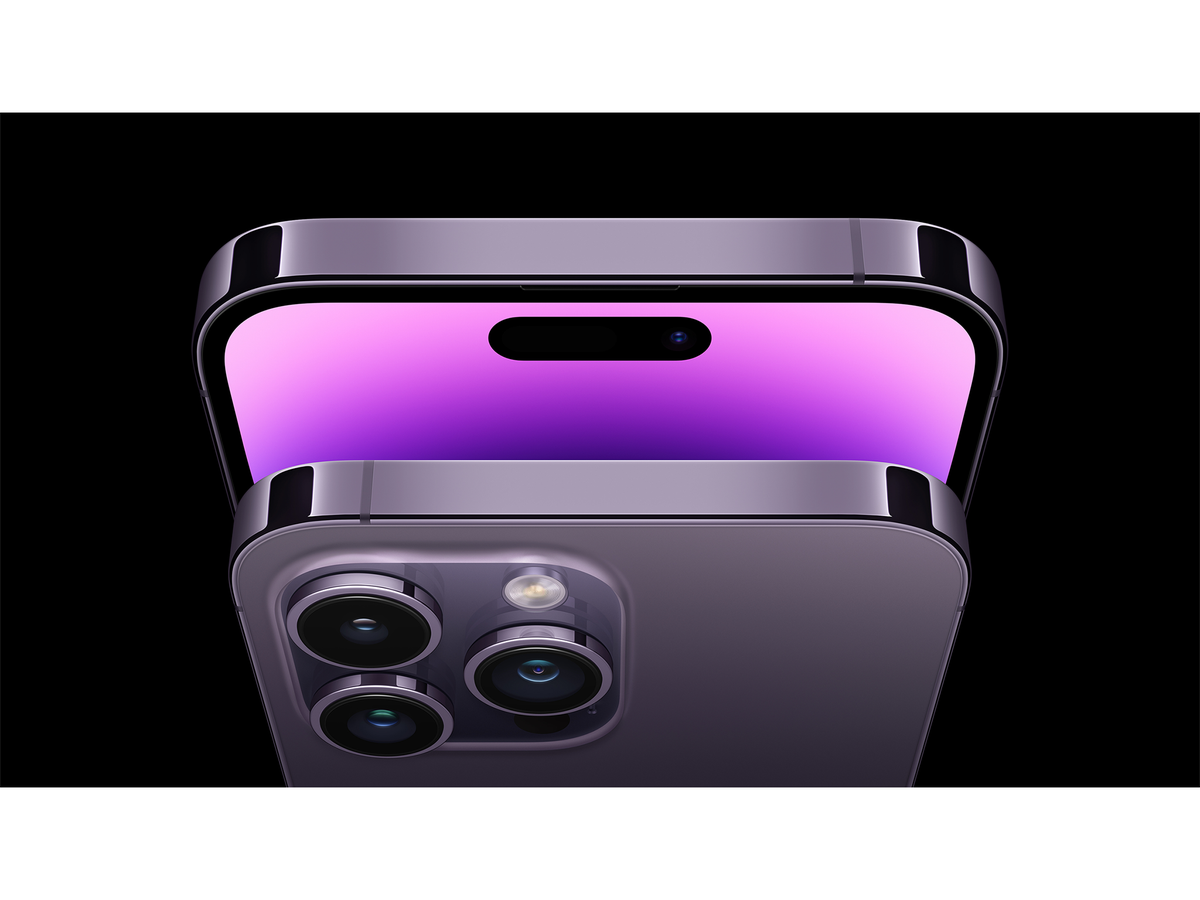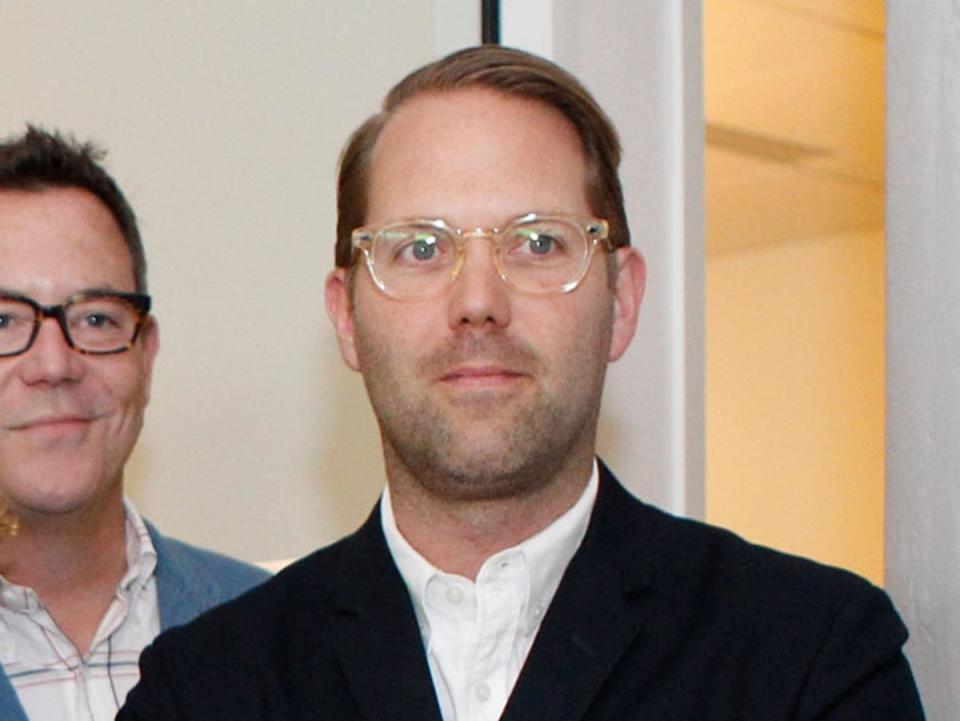Eight secrets of Apple’s design success: iPhone executives reveal how its devices are really created

The Apple iPhone 14 Pro and its larger version, iPhone 14 Pro Max, include a new element called the Dynamic Island. It’s not an adventure destination that keeps you on the move, no; it’s an area of the iPhone display which changes shape according to what you’re doing.
In a rare interview, Apple’s Craig Federighi, senior vice president of software engineering, and Alan Dye, vice president of design talked exclusively to The Independent about the destination that is Dynamic Island and in doing so were quietly revelatory about Apple’s approach to design in general.
Since the iPhone X introduced facial recognition, replacing the fingerprint sensor on some earlier iPhones, every Apple flagship phone has had an area at the top of the display where the TrueDepth camera system sits, enabling the secure identification mechanism.
This cut-out has shrunk to its smallest size yet on the latest Pro iPhones, and the Dynamic Island enhances it, displaying a timer to the right of it or the artwork for the currently playing song to the left, growing and changing shape as needed.
It’s a highly attractive effect that slightly transforms how you interact with the iPhone, and it elegantly disguises the fact that part of the screen isn’t screen at all. Here are the Apple design techniques which led to the Dynamic Island.
Collective Design: Teams working together
“Our goal has always been to design all of our products in a way where software hardware are conceived of together,” Mr Dye explains. “Hopefully, you never quite know where the hardware ends and the software begins. And it’s why we design all of our products together in one studio.
“We really believe that Dynamic Island, which is really this wholly new way of experiencing iPhone, is a great example of this. We worked hard to blend the lines between hardware and software, and you see that when the island adapts in real time to show alerts and notifications and activities.”
Tight integration leads to intense working together. “At Apple,” Mr Dye goes on, “it’s always hard to look back and understand how these things came to be. It’s a constant back and forth where we talk about ideas and concepts and then put them through the rock tumbler. That way, we come to think about what the ultimate solution should be and what we should ship as a product.”
Apple’s unique ecosystem
Then there’s the fact that Apple makes both hardware and software. In the mobile phone world, the other major player is Android, with the software made by Google but the hardware by Samsung, Sony, OnePlus, Oppo and plenty of others.
Mr Federighi doesn’t name Android, but alludes to it. “From the software side, if you’re an operating system engineering team at any other company, then your mission is to create something that’s going to run across the greatest diversity of lowest-common-denominator devices with the least dependency on the characteristics of those devices”, he says.
“So, why is this essentially Apple? We celebrate opportunities to take distinct advantage of what a new piece of hardware can do when we design it together, between different sections: industrial design, human interface design and software because that’s where Apple can do something truly unique and special. If you’re building an operating system that needs to run on a thousand different kinds of devices, you’re not going to invest in taking maximum advantage of all of them, it just seems like a distraction. For us, it’s not a distraction, it’s an obsession. It’s really the highest form of what we can do.”

Software changes to maximise hardware changes
In 2017, when Apple introduced the iPhone X and its Face ID, it removed the Touch ID button on the front. “This has been the first time since iPhone X five years ago, that we’ve changed the face of the iPhone in this significant way. With iPhone X we were removing the home button and that caused us to rethink gestures and multitasking. It really changed the feel of the phone in a fundamental way. It wasn’t just replacing the button with something button-like to continue using the phone as you did before”, Mr Federighi explains.
“The same is true now with Dynamic Island where this gave us the opportunity to deeply reconsider notifications and multitasking and how background activities are managed on iPhone. We are really drawn to those moments and those opportunities for something like this to catalyse deeper change in the experience. And in this case, we have this one great interactive place that is naturally a focal point for understanding what’s happening with your device.
“And then to be able to interact with it, to tap to go to the underlying application, to tap and hold to get simple controls and suddenly all of the tapping on your phone just feels so much more close and immediate and accessible. And so, this has been really a wonderful opportunity for us to do what only Apple can do.”
Changing the intrinsic relationship
Mr Dye explains that the Dynamic Island changes how you relate to the iPhone. “We love this notion that people are interacting with their phones in new ways, right? I think they’re getting more comfortable with gestures, fluid user interfaces, and this feels like we’re building on this language that we have for people to physically interact with their phones”, he says.
“This is also part of our longer journey away from the original iPhone where you would tap an app icon and then go into the app to interact with it. We have widgets on the home screen and now with Dynamic Island, we allow for users to experience all that apps we have to offer without having to go deeply into an app, which I think feels like a shift in how we think about interacting with the phone.”
Long-term thinking
And this is not something that has popped up out of nowhere, Mr Dye says. “We work on these things for a long time, and you’ll see the threads of different activities building to support these big moments, to have multiple things come together to be larger than the sum of their parts.”
The latest iPhone software allows you to have multiple lock screens on the phone which you can easily switch between. And these can include widgets, which are items that can show current information live, so a weather widget shows what’s happening where you are right now, without you going to the weather app, for instance.
“When we introduced widgets a few years ago, we knew they were going to have their moment on the lock screen later on and we knew that in reconsidering the role of the lock screen we would be bringing great personalisation. This would also bring the idea of information that would be ambiently available to you in the lock screen.”
One example of this uses the Dynamic Island immaculately: soon, you’ll be able to easily monitor live activities so if, say, you’ve ordered a food delivery, the Dynamic Island will automatically show it’s arrived without you having to wait for a notification or open the app, and stays on screen even if you’re switching apps, say. Or if you’re tracking a sports game, the score will update in real time. This has been in the planning for a long time.
“We understood that this kind of notification had a role on the lock screen and then with Dynamic Island that there was the opportunity to stay on top of those activities even as you moved around the device”, Mr Dye explains, “and so, we were always engineering with the part you could see above the water for a while, as well as the part that we knew was coming. And that’s why it’s been so exciting to be able to show the whole story of what we’ve been working on for so long.”

Aiming for magic
When you come across the Dynamic Island for the first time, it’s like watching a magician performing a trick where you can’t quite see the card up their sleeve. Sleek animations govern the notifications and other interactions, designed to delight the eye. And that’s the point, Mr Federighi says.
“When the craft of those interactions, when those animations are so fluid and so organic that you actually perceive them as more than a computer performing an animation, then that thing takes on an identity and comes to life. And I think that’s why, when the video first played when Dynamic Island was previewed to press in Cupertino, there was this sort of gasp in the crowd, because it wasn’t just seen as animation, it was like, ‘ooh what just happened there?’,” he says.
“The amount of craft that goes into first conceiving the design, then engineering the animation systems and then showing a result: that orchestration is a real technical exercise. But when you put together that craft with that engineering, that’s when it crosses into magic, you know, there’s a point where it crosses into magic.”
Making it inevitable
Here’s an example of that magic. The cut-out is mostly made up of cameras and other sensors rather than a touchscreen. However, even if you tap really carefully on the camera, the Dynamic Island still responds.
“We knew that we wanted Dynamic Island to feel like an object, that you didn’t have to think about there being a camera under there or worry where you tapped. It all feels like display and like it has the properties that displays have, that they’re interactive. This is a case where understanding the design intent led to working with the touch team and the display team”, Mr Federighi says.
“There are places in between the sensors where there’s a little bit of display and a little bit of touch and the touch algorithms are sensitive enough to pick up near-touches, so we were able to map out a touch system that could perceive taps even in areas just adjacent to places where we had the sensors. Once we realised what we wanted Dynamic Island to be, those were the kind of iterations that were happening about how to make it actually behave the way we wanted it to behave”,
Mr Dye adds: “Getting to great ideas is really hard but executing on them, making them feel inevitable as if there’s no other way they could have been, that’s way harder because of all these small details that have to come together and honestly, it’s the incredible invention from teams across Apple just to enable something like this.”
The Apple environment and user experience
Perhaps there’s something about the structure of Apple, the way it is to be at Apple, that informs the results. “Like a lot of projects that we work on it is that rock tumbler for ideas that matters, where there are so many people engaged in the projects and programs and the rigorous debates that lead to these sort of experiences. Collectively we are responsible and accountable for making really great products, but no decision is made in isolation, no one really owns, you know, decision-making”, Mr Dye says.
“I think user experience is the absolute magnetic north for the entire project, for every discussion. Of course, our design teams are incredible advocates for user experience, but for the entire company – as we’re rock tumbling – the question is what’s the best experience and then, how do we make that? How do we deliver on the best experience?”, Mr Federighi says.
“When you have a cross disciplinary team that’s full of experts along every dimension, who can impact delivering on a project, all resonating around that shared goal, then this is what can result.”

